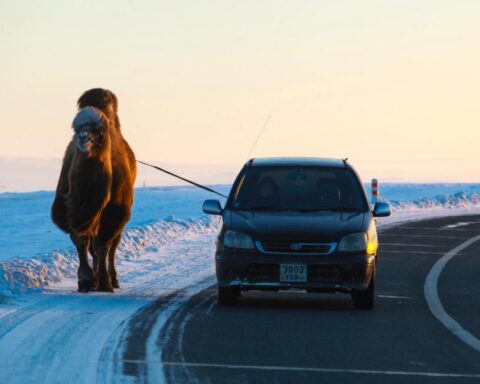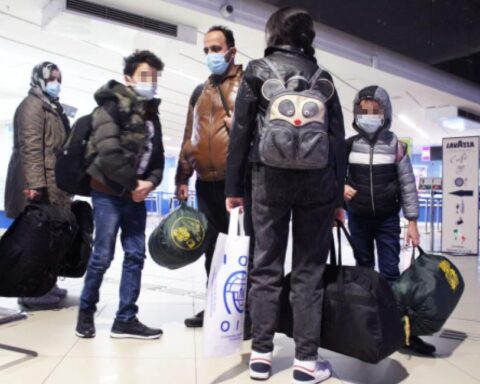Erbil — IOM, USAID and NI will assist members of the community who survived the genocide in accessing durable solutions through the construction of new housing units near the old town, alongside other tailored measures to help families feel safe, heard and supported in their recovery.
IOM and NI will also support the community’s memorialization efforts through the establishment of memorials and measures to protect the cemetery where the remains of individuals exhumed from Kocho’s mass graves are now being reburied.
“My community of Kocho has experienced some of the worst atrocities known to mankind,” said Nadia Murad, Yazidi activist and President of Nadia’s Initiative.
“Those who survived the genocide have been waiting almost seven years to return home. Thousands of women and children are still missing in captivity. Hundreds of men and women who were killed have yet to be identified. Survivors of sexual violence and single mothers are struggling to find shelter and adequate support.”
“I am grateful to the US government’s support of the Yazidi community. This project is a critical step toward enabling the dignified return of displaced Kocho community members and facilitating the rebuilding of a dignified life.”
“The atrocities faced by survivors of genocide make it incredibly painful to return to the exact location where these horrendous acts took place. Meaningful and inclusive consultation and participation with both survivors and the broader community are essential to ensuring the success and sustainability of this initiative. We are proud to be partnering with IOM and Nadia’s Initiative to help survivors of genocide safely heal and rebuild their lives,” said John Cardenas, USAID Mission Director in Iraq.
In the early hours of 3 August 2014, ISIS converged on Sinjar, the ancestral homelands of the Yazidis in northwest Iraq. ISIS launched a genocidal campaign against the minority group, causing over 90 per cent of Sinjar’s residents to flee, including thousands who were forced to ascend the nearby mountain range on foot. Over the following hours and days, thousands of Yazidis were killed, and over 6,400 others were abducted.
Kocho, a Yazidi village in South Sinjar that was home to approximately 1,700 people, witnessed some of ISIS’s worst atrocities when armed militants placed the population under siege. Faced with an initial demand to either convert to Islam or face execution, community leaders entered frantic negotiations to identify a way to enable villagers to leave safely.
On 15 August 2014, after 12 terror-stricken days, ISIS rounded up and massacred the town’s men, boys, and older women; the remaining women and girls were abducted and sold into sexual slavery.
Although Iraqi forces re-established control of Kocho in 2017, the village remains derelict, with most of the community still residing in difficult conditions in displacement camps in the Kurdistan Region of Iraq. Many survivors express a desire to return to their land and traditional livelihoods, but state that they cannot go back to the exact scene of the atrocities.
“Destruction of housing, loss of livelihoods, and a lack of vital services are clear obstacles to return for displaced populations across Iraq. For survivors of ISIS’s crimes in Kocho, the trauma presents an additional barrier,” said IOM Iraq Chief of Mission, Gerard Waite.
“Measures to support Yazidi survivors of genocide in achieving durable solutions, in order to begin to rebuild their lives, are greatly overdue. We are glad to be working with USAID, Nadia’s Initiative, and the greater community to accelerate these efforts.”





